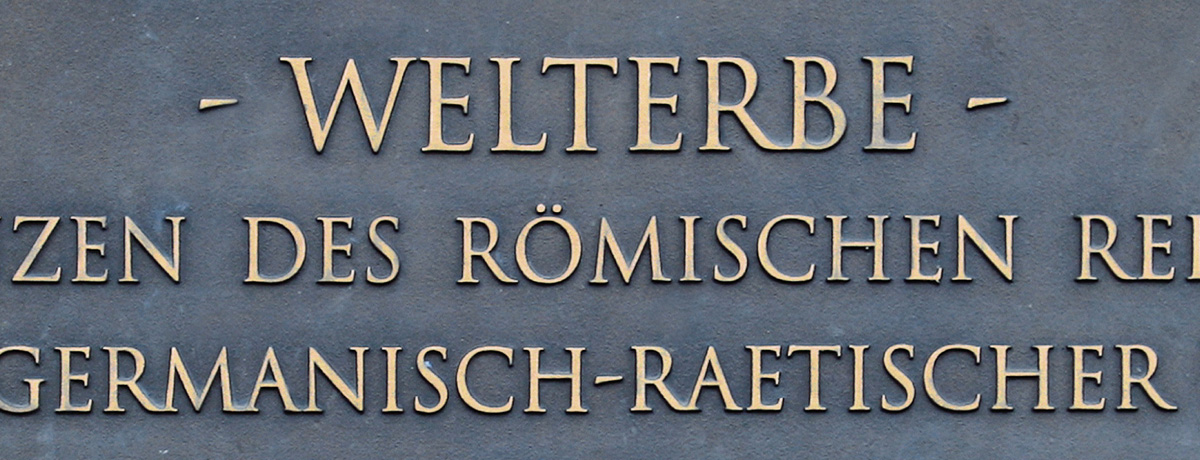THE UPPER GERMAN-RAETIAN LIMES
History of the Upper German-Raetian Limes
The Upper German-Raetian Limes (ORL), which started out as little more than a simple road, was expanded into a system of continuous barriers consisting of palisades, ditches, and ramparts in Upper Germania and palisades and stone walls in Raetia. This expansion took place particularly under the emperors Hadrian (ca. 120 AD), Antonius Pius (ca. 160 AD), and Septimius Severus (ca. 200 AD). However, the Limes border was not so much a military bulwark but rather a monitored border where entry and exit were controlled and goods were traded or cleared through customs. This regulated border control functioned until the middle of the 3rd century AD, until its end was brought about by an ever-increasing threat from Germanic tribes and constant internal Roman conflict. The ORL forms the final point of Roman expansion in Germany and runs from the Rhine River north of Koblenz through the Westerwald, Taunus, Wetterau, along the Main River, through the Odenwald and the Swabian-Franconian Wald, the Albvorland, including the Nördlinger Ries, and ends where it meets the Danube River west of Kelkheim. This continuous artificial border thus traverses through many varying landscapes.
With the exception of a 52 km long section along the Main River, it is a deliberately created land border, the remains of which can still be clearly traced in many places in the landscape today. In particular, the continuous course of the often unswervingly straight border markings is what makes the ORL so distinctive and therefore represents a significant and defining element of our cultural landscape.
Along the Roman border fortifications, in addition to the actual border markings, there are a series of around 900 watchtowers and 120 larger and smaller military forts. The larger forts can be found both directly on the Limes border and situated further back in the hinterland. The archaeological monuments of the ORL constitute an authentic testimony to the history of our country. They are indispensable and irreplaceable sources for historical research.
The Upper German-Raetian Limes Today
Even in post-Roman times, and in some places to this day, the ORL has had an influence on the lives of the people in its surroundings. It provides an important contribution to identification through place and field names or through its archaeological monuments. Its preserved remains are occasionally part of natural monuments and require an increased effort for their preservation and utilisation.
The ORL and its associated monuments are permanent fixtures in the lives and work of the local residents. An ongoing and gradual transformation in its significance can be recognised, which is expressed through an increasing public awareness of the unique character of the ORL.
One of the special features of the ORL as an archaeological monument, in addition to the large proportion of elements visible aboveground, is the fact that a not inconsiderable part of its substance lies hidden in the ground, invisible to the naked eye. This is another contributing factor as to why the ancient remains have been authentically preserved for nearly 1800 years. This, however, poses a special set of challenges for the mediation and development of the ORL.
The Upper German-Raetian Limes as a World Heritage Site
In July 2005, the UNESCO World Heritage Committee in Durban (South Africa) decided to include the Upper German-Raetian Limes as part of the new World Heritage Site “Frontiers of the Roman Empire” in the list of World Heritage Sites. The UNESCO application was prepared and submitted jointly by the states of Bavaria, Hesse, Rhineland-Palatinate and Baden-Württemberg. The Limes became the thirty-first German property on the World Heritage List. The World Heritage Site “Frontiers of the Roman Empire: Upper German-Raetian Limes” covers an area of roughly 250 square kilometres and runs through more than 150 municipalities and 20 districts in the four federal sates mentioned.
Requirements for a World Heritage Site
World Heritage Sites are subject to special requirements in terms of handling, protecting and maintaining the monument. Together with the application and a detailed inventory of the monument, UNESCO and ICOMOS also received a protection and development concept regarding the Limes.
This “Management Plan”, which was part of the World Heritage application, outlines the most important “commandments” and “prohibitions” for the future management of the World Heritage Site. On the basis of the management plan, the State Offices for the Preservation of Monuments, as the responsible authorities in each state, drew up state-specific “Limes Development Plans”. Any planned changes to the World Heritage site and the surrounding buffer zone should comply with the Limes Development Plans. Furthermore, all changes to the archaeological monument are subject to the approval or permission of the monument protection authority in accordance with the monument protection laws of the federal state.



